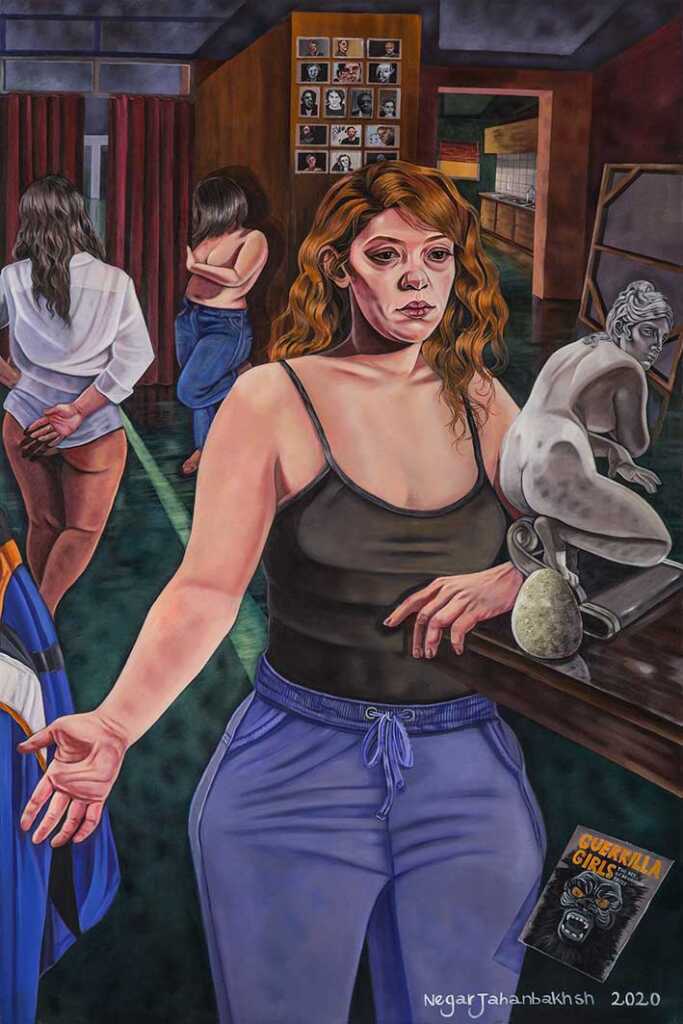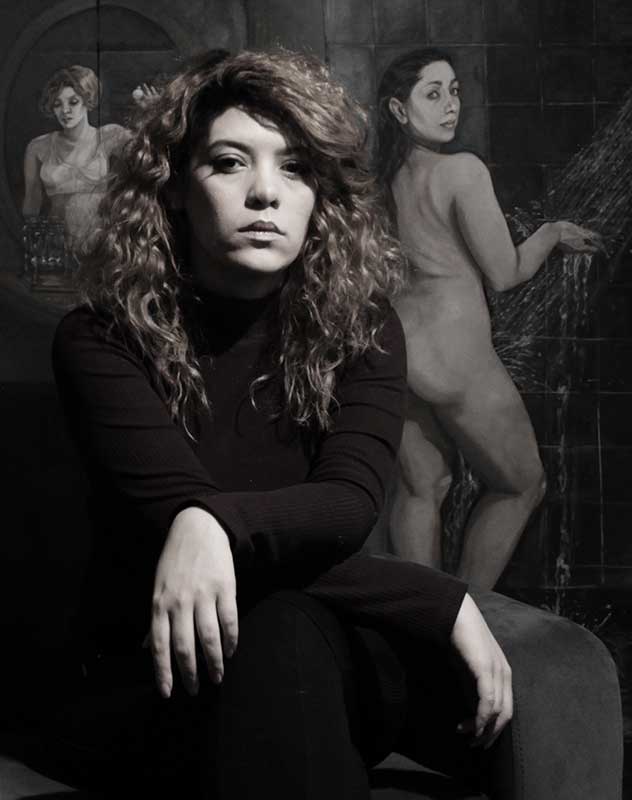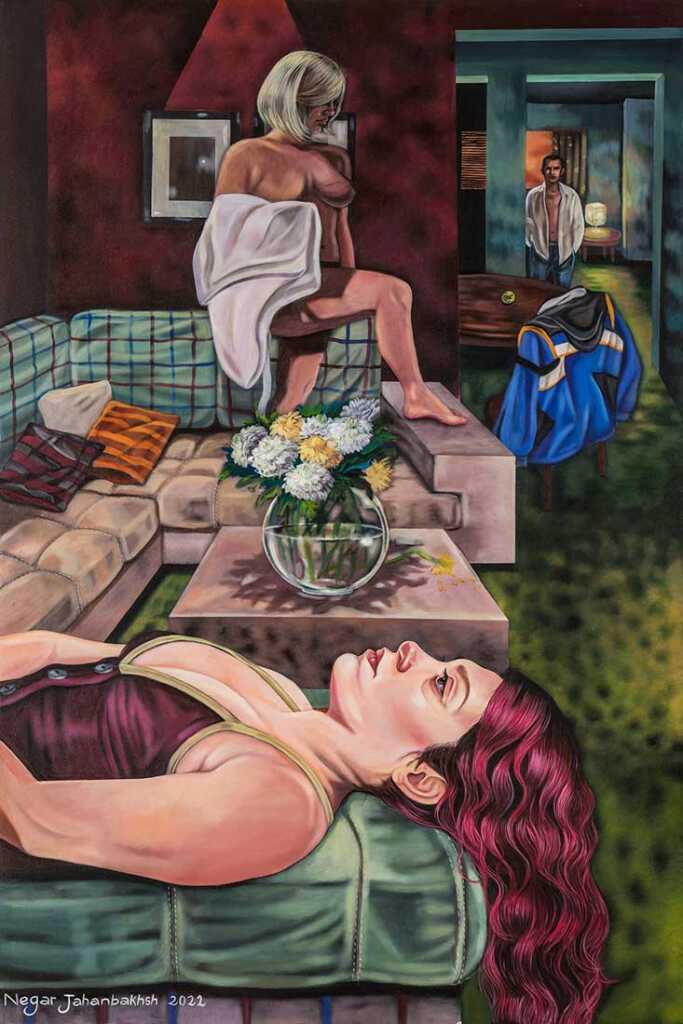NEGAR JAHANBAKHSH | HUMAN SELF-REFLECTION


Acrylic on Canvas. 150 x 100 cm. 2022

Negar Jahanbakhsh (b. 1986, Isfahan) is an internationally award-winning Iranian artist who exhibited her art in countless solo and group exhibitions around the globe, participated in auctions and was awarded prestigious prizes for her unique art.
Negar graduated from Modarres Art School in 2003 with a diploma in Graphic design and continued her studies in painting at the Alzahra Art University, where she graduated with a BA in art. In 2014 she graduated with honors from the Art & Architectural Azad University with MA in painting.


Acrylic on Canvas. 150 x 100 cm. 2021

150 x 100 cm. 2022
Nagar regularly exhibits her works at exhibitions and art fairs in Iran and worldwide. Since 2013 she has exhibited at the Azad Art Gallery, Tehran 2013, at ‘The Other Art Fair Chicago, Mana Contemporary, in 2019, at Magic of Persia Contemporary Art Prize Shortlists in Dubai in 2015, at the Edge of Arabia Projects, London in 2015, at the Kamil Art Gallery in Monaco, during Monaco Art Week in 2018, and at ‘The Hoxton,’ New York in 2021 amongst others.
The art fairs in which Nagar exhibited in recent years included the Discovery Art Fair, Cologne in 2022, the Amsterdam International Art Fair, Beurs van Berlage, Amsterdam in 2019, and The Other Art Fair New York, Brooklyn Expo Center, New York in 2021. She has been Internationally awarded the Afshin Pirhashemi Prize in 2010, Magic of Persia Contemporary Art Prize Finalists, London in 2015, LAM – Lisser Art Museum in 2018, Saatchi Art Rising Star in 2021, Finalist at the joined competition created by Florence Biennale, Art Market Magazine and Lens Magazine in 2020 and the Gold List by Art Market Magazine in 2022.

Acrylic on Canvas. 150 x 100 cm
“Many years ago, I read an interview with Houshang Golshiri ((1938 – 2000), an Iranian fiction writer, critic, and editor), where he was asked:
“Why do you write?” He answered: “For many reasons, sometimes I write to know whether I am in love or not. Once it happened, I was witness to a relationship. So I came back home and wrote the first chapter of my book. Then from the musical sense, I had to carefully listen to it. I listened and realized that the composer was in love; he was desperately in love.
Thus I write to see if I am in love or not.”
There are times that one is not aware of his standing in society.
Several years after the Islamic revolution, around 1980-81, I had no idea what was happening. I had returned to Isfahan and was working as a teacher. Every two weeks, I traveled to the writing association in Tehran.
I also observed what was happening in Isfahan. A friend told me a story that he had become involved in.
I told him: ‘I will give you six months to sort this out”. After six months, I called him and asked him whether he had solved the story or not, and he answered, ‘no.’ I told him that I would finish the story. I wrote it to see what happens. Sometimes I want to show the truth of the Iranian people to themselves, or in other words, to show them their own demons and inner monster.On one of my trips, I was accompanied by a writer friend, and I realized he was a dictator, a mini dictator, and if he came to power, a Hitler would rise from within him. So someone has to show this monster within.
Maybe what I do in my painting is this; I paint to know if I am in love or not, to know my own state of mind, to know what’s going on, and to show humanity’s true self. I paint to record history.”

Acrylic on Canvas. 150 x 100 cm. 2020

